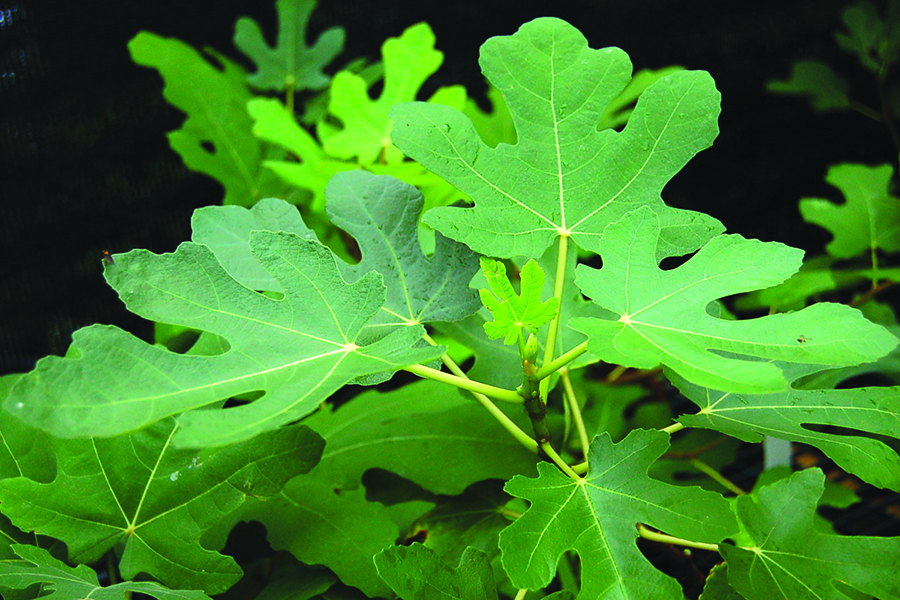The tropical, edible fig

A little care will bring healthy fruit
The trend to grow plants that produce an edible fruit or vegetable is still popular. As we begin to prepare for the coming spring, what edibles do you want to add to your garden? One to consider is Ficus caria, shown below, the edible fig.
Figs are not fully winter-hardy in our area, so special care is needed to keep them alive and productive. The root system is generally hardy but the stems and branches can be damaged or killed during a typical Kentucky winter.
Plant your fig in mid to late spring. Select a site that faces south to southwest and has winter protection such as near a building, fence, or rock wall. Plant in full sun or fruit production will be dramatically reduced. Plants produce fruit on new growth, so even if your fig is killed back to the ground it still has the potential to produce figs in late summer and early fall. If you believe your plant has been killed back to the ground, wait for signs of new growth from the base then cut back the dead stems and you will have a whole new plant before you know it.
Chicago Hardy or Brown Turkey are the two best figs for our area. If you get one in late summer or fall, keep it in the container until dormant and overwinter it in your garage or basement until spring. Light pruning in early spring will encourage branching and more fruit production. Maintaining your plants lower and shrubbier also assists with overwintering if you want to cover the plant with mulch to protect it. Only light fertilization is recommended for figs in our area. Too much will encourage growth but fewer figs will be produced.
Even if your plant dies to the ground each year or you never have a fig produced, they are beautiful plants for our landscape. In Kentucky, only one plant of this type of fig is needed because they do not require pollination. The large interesting leaves will bring a bold tropical feel to your garden that you are sure to love.
Shelly Nold from the November 2015 issue.

